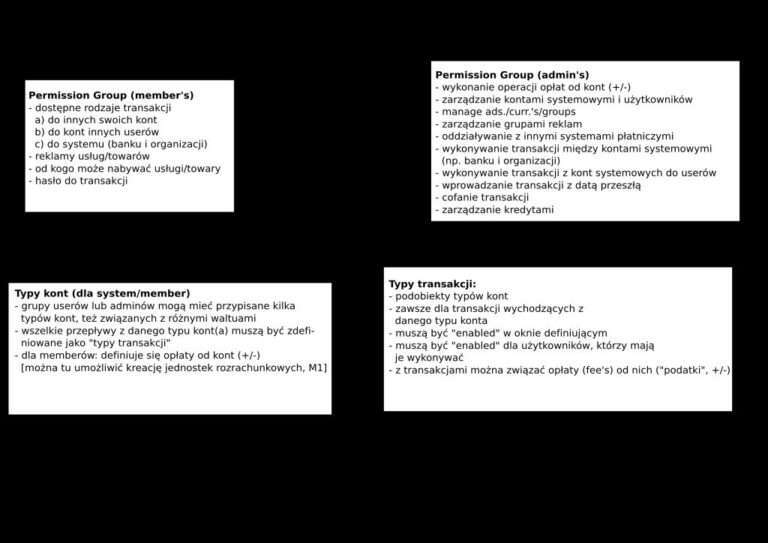Demand Creation vs Demand Generation

In the world of marketing and business development, two terms that often come up are demand creation and demand generation. While they may sound similar, they actually represent two distinct approaches to driving customer interest and generating sales. Understanding the difference between these two concepts is crucial for any business looking to effectively connect with their target audience and drive revenue.
In this blog post, we will delve into the fundamentals of demand creation and demand generation, exploring their definitions, key strategies, benefits, and challenges. We will also compare and contrast these approaches, highlighting their similarities and differences. Additionally, we will discuss when to use each method based on specific business goals and provide real-world examples to illustrate how demand creation and demand generation can be implemented successfully.
So, if you’ve ever wondered about the nuances between demand creation and demand generation, and how they can impact your business’s bottom line, then keep reading. By the end of this post, you’ll have a clear understanding of these concepts and be equipped with the knowledge to make informed decisions when it comes to driving demand for your product or service.
Understanding the Basics: Demand Creation and Demand Generation
Demand creation and demand generation are two fundamental concepts in marketing that play a crucial role in driving customer interest and generating sales. Before we dive into the specifics of each approach, let’s first understand the basics of demand creation and demand generation.
Demand creation refers to the process of creating a market need or desire for a product or service that may not have existed previously. It involves identifying potential customers and educating them about the benefits and value that a particular product or service can provide. In essence, demand creation aims to generate demand where there may have been little to none before.
On the other hand, demand generation focuses on capturing existing demand and converting it into actionable leads or sales. It involves strategies and tactics aimed at stimulating interest and engagement from potential customers who are already aware of their need for a product or service. Demand generation aims to generate leads, nurture them, and ultimately drive conversions.
While both demand creation and demand generation aim to drive sales, they differ in their approaches and objectives. Demand creation is more focused on creating a market need and educating potential customers, whereas demand generation is about capturing existing demand and converting it into sales. Understanding these distinctions is vital when developing marketing strategies to effectively connect with your target audience and achieve desired business outcomes.
In the following sections, we will delve deeper into each approach, exploring their concepts, key strategies, benefits, and challenges. By understanding the intricacies of demand creation and demand generation, you will be better equipped to make informed decisions about which approach aligns best with your business goals and target audience.
What is Demand Creation
Demand creation is a strategic marketing approach that focuses on creating a market need or desire for a particular product or service. It involves stimulating customer interest and generating demand where it may not have existed previously. By effectively creating demand, businesses can attract new customers, increase sales, and ultimately grow their market share.
To have a comprehensive understanding of demand creation, let’s explore the concept in more detail, including its key strategies, benefits, and challenges.
The Concept of Demand Creation
Demand creation revolves around the idea of identifying potential customers who may not be aware of their need for a specific product or service. It involves creating awareness, educating customers about the benefits and value of the offering, and ultimately influencing their purchasing decisions.
One of the fundamental aspects of demand creation is understanding the target audience and their pain points. By conducting market research and customer analysis, businesses can gain insights into consumer needs, preferences, and motivations. This information is then used to develop targeted marketing campaigns that effectively communicate the value proposition of the product or service.
Demand creation also involves creating a sense of urgency and scarcity. By highlighting the unique features, limited availability, or time-limited offers, businesses can instill a sense of FOMO (fear of missing out) among potential customers, encouraging them to take action and make a purchase.
Key Strategies for Demand Creation
- Market Research: Conduct thorough market research to understand the target audience, their needs, and pain points.
- Product Differentiation: Identify unique selling points and differentiate the product or service from competitors to create a compelling value proposition.
- Content Marketing: Create informative and engaging content that showcases the benefits and value of the offering, addressing customer pain points.
- Influencer Marketing: Collaborate with industry influencers or thought leaders to promote the product or service and create buzz among potential customers.
- Branding and Positioning: Develop a strong brand identity and position the product or service as a solution to customer problems or challenges.
Benefits and Challenges of Demand Creation
Benefits:
- Market Expansion: Demand creation can help businesses tap into new markets and expand their customer base.
- Competitive Advantage: By creating a unique market need, businesses can establish a competitive edge over their competitors.
- Increased Sales: Effective demand creation strategies can lead to increased sales and revenue generation.
- Brand Awareness: Demand creation efforts can enhance brand awareness and build a positive brand reputation.
Challenges:
- Education and Awareness: Educating customers about a new product or service can be challenging, requiring significant marketing efforts and resources.
- Time and Cost: Demand creation strategies may require a longer time frame and higher investment compared to demand generation tactics.
- Uncertainty: Creating demand for a new offering can be unpredictable, as market acceptance and customer response are not guaranteed.
In the next section, we will explore the concept of demand generation, providing insights into its strategies, benefits, and challenges.
What is Demand Generation
Demand generation is a strategic marketing approach focused on capturing existing customer demand and converting it into actionable leads or sales. Unlike demand creation, which aims to create a market need, demand generation targets potential customers who are already aware of their need for a product or service. By implementing effective demand generation strategies, businesses can generate leads, nurture them, and ultimately drive conversions.
To gain a comprehensive understanding of demand generation, let’s explore the concept in more detail, including its key strategies, benefits, and challenges.
The Concept of Demand Generation
Demand generation revolves around the idea of attracting potential customers who are already in the market for a particular product or service. It involves creating awareness, stimulating interest, and engaging with potential customers through various marketing channels. The goal is to generate leads and move them through the sales funnel, ultimately converting them into paying customers.
One of the key aspects of demand generation is identifying and targeting the right audience. By leveraging data and analytics, businesses can segment their target market based on demographics, behaviors, and interests. This allows for more personalized and targeted marketing campaigns that resonate with potential customers and increase the chances of conversion.
Demand generation strategies often focus on providing valuable content and experiences to potential customers. This can include creating informative blog posts, hosting webinars, offering free trials or demos, or providing interactive experiences. The idea is to build trust, establish credibility, and showcase the value of the product or service, thereby motivating potential customers to take the desired action.
Key Strategies for Demand Generation
- Content Marketing: Create and distribute valuable and relevant content that addresses potential customers’ pain points and provides solutions.
- Search Engine Optimization (SEO): Optimize website content and structure to improve organic search visibility and drive targeted traffic.
- Social Media Marketing: Utilize social media platforms to engage with potential customers, share valuable content, and build brand awareness.
- Email Marketing: Build an email list and send targeted, personalized emails to nurture leads and encourage conversions.
- Lead Generation Campaigns: Run targeted campaigns to capture potential customers’ contact information, such as offering gated content or hosting webinars.
Benefits and Challenges of Demand Generation
Benefits:
- Lead Generation: Demand generation strategies can help businesses generate a steady stream of qualified leads.
- Increased Conversions: By nurturing leads and providing valuable content, demand generation efforts can lead to higher conversion rates.
- Relationship Building: Demand generation allows businesses to build relationships with potential customers, establishing trust and loyalty.
- Data Insights: Demand generation strategies provide valuable data and insights about customer behavior, preferences, and engagement.
Challenges:
- Competition: In a crowded marketplace, businesses face challenges in capturing and retaining customers’ attention amidst fierce competition.
- Lead Nurturing: Nurturing leads through the sales funnel can be time-consuming and requires a well-executed strategy.
- Measurement and Attribution: Determining the success and ROI of demand generation efforts can be challenging without proper tracking and analytics.
By understanding the concept of demand generation and its strategies, businesses can effectively attract and convert potential customers, driving revenue growth. In the next section, we will compare and contrast demand creation and demand generation, highlighting their similarities and differences, and discussing when to use each approach.
Comparing and Contrasting Demand Creation and Demand Generation
When it comes to driving customer interest and generating sales, demand creation and demand generation are two distinct approaches. In this section, we will compare and contrast these two concepts, highlighting their similarities and differences. Additionally, we will discuss when to use each approach based on specific business goals and target audience.
Key Similarities
While demand creation and demand generation have different objectives, they do share some commonalities:
- Customer Focus: Both approaches revolve around understanding the needs and preferences of the target audience to effectively connect with potential customers.
- Marketing Strategies: Both demand creation and demand generation rely on various marketing strategies such as content marketing, email marketing, and social media marketing to reach and engage potential customers.
- Lead Generation: Both approaches aim to generate leads that can be nurtured and converted into paying customers.
Key Differences
Despite their similarities, demand creation and demand generation differ in several aspects:
- Customer Awareness: Demand creation targets potential customers who may not be aware of their need for a product or service, while demand generation focuses on capturing existing customer demand.
- Market Education: Demand creation involves educating potential customers about the benefits and value of a product or service, whereas demand generation assumes that potential customers are already aware of their need.
- Timing: Demand creation is typically employed when introducing a new product or service to the market, while demand generation is used to capture and convert existing customer demand.
- Marketing Approach: Demand creation often requires a more aggressive and proactive marketing approach to create awareness and stimulate interest, while demand generation focuses on nurturing leads and building relationships over time.
When to Use Each Approach
The choice between demand creation and demand generation depends on various factors, including business objectives, target audience, and the stage of the product or service lifecycle. Here are some scenarios where each approach may be more suitable:
- Demand Creation: Demand creation is ideal in situations where a new product or service is being introduced to the market, and potential customers may not be aware of their need. It can be effective when there is a unique value proposition or when addressing an underserved market.
- Demand Generation: Demand generation is suitable when potential customers are already aware of their need for a product or service. It is used to capture and convert existing customer demand, nurturing leads and guiding them through the sales funnel. Demand generation is often employed to drive more immediate conversions and maximize revenue from existing customer demand.
It’s important to note that demand creation and demand generation are not mutually exclusive. In some cases, businesses may employ a combination of both approaches to effectively drive customer interest and generate sales.
In the next section, we will explore real-world examples of demand creation and demand generation, providing insights into how these approaches have been successfully implemented by businesses.
Real-world Examples of Demand Creation and Demand Generation
To understand the practical application of demand creation and demand generation, let’s explore real-world examples of businesses that have successfully implemented these approaches.
Demand Creation Case Studies
- Tesla: Tesla, the electric car manufacturer, exemplifies demand creation through its innovative products and marketing strategies. By introducing electric vehicles to the mass market, Tesla created a new market need and educated consumers about the benefits of sustainable transportation. Through captivating marketing campaigns, showcasing the performance and environmental advantages of their vehicles, Tesla successfully generated demand and built a passionate customer base.
- Apple: Apple is known for its exceptional demand creation strategies. With the introduction of the iPod, iPhone, and other innovative products, Apple created a market need for sleek, user-friendly, and technologically advanced devices. Through strategic advertising, captivating product launches, and the creation of a unique ecosystem, Apple generated significant demand and created a loyal customer following.
Demand Generation Case Studies
- HubSpot: HubSpot, a provider of inbound marketing and sales software, is an excellent example of demand generation. Through their content marketing efforts, HubSpot offers valuable resources, such as blog articles, ebooks, and webinars, to educate potential customers about inbound marketing strategies. By capturing leads through gated content and nurturing them with personalized email campaigns, HubSpot effectively generates demand and converts leads into paying customers.
- Amazon: Amazon utilizes sophisticated demand generation techniques to engage potential customers and drive conversions. Through personalized recommendations, targeted email marketing, and a seamless shopping experience, Amazon leverages customer data to deliver relevant product suggestions and promotional offers. By simplifying the buying process and providing exceptional customer service, Amazon has become a leader in demand generation, fostering repeat purchases and customer loyalty.
Lessons Learned from these Examples
These real-world examples highlight the effectiveness of both demand creation and demand generation strategies. Key lessons to learn from these success stories include:
- Understanding the target audience and their needs is crucial for both demand creation and demand generation.
- Educating potential customers about the benefits and value of a product or service is essential in demand creation.
- Building trust and credibility through engaging content and personalized experiences is vital for demand generation.
- Leveraging data and analytics to segment the target market and deliver personalized marketing messages can significantly impact demand generation efforts.
By studying these examples, businesses can gain insights into successful demand creation and demand generation strategies, allowing them to apply similar approaches to their own marketing efforts.
In conclusion, demand creation and demand generation are two distinct approaches to driving customer interest and generating sales. While demand creation focuses on creating a market need, demand generation captures existing customer demand. Both approaches have their own strategies, benefits, and challenges, and the choice between them depends on business objectives and target audience. By understanding these concepts and learning from real-world examples, businesses can effectively implement demand creation and demand generation strategies to drive revenue growth and achieve their marketing goals.






